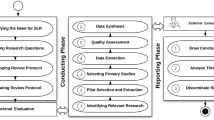Abstract
The emergence of Web technologies enables a variety of Web-based service applications, which can be examined from business process integration, supply chain management, and knowledge management perspectives. To categorize existing Web-based services while foreseeing potential new types, a unified view is needed to represent the structures and processes of Web-based services. This paper proposes a general framework to identify essential structures and operations of Web-based services, and then models these components. We articulate the framework with Web technologies, such as Web service and semantic Web, multi-agent and peer-to-peer, and Web information retrieval and mining. Two comprehensive examples in insurance and knowledge services are used to elaborate the use of Web-based service framework in fulfilling business processes. This study synthesizes essential structures and processes of Web-based services to build a framework for researchers and practitioners to develop Web-based services and techniques.






Similar content being viewed by others
References
Bakos Y (1991) Information links and electronic marketplaces: the role of interorganizational information systems in vertical markets. J Manage Inform Syst 8(2):31–52
Berge C (1989) Hypergraph: combinatorics of finite sets. North-Holland, Amsterdam
Berners-Lee T, Hendler J, Lassila O (2001) The semantic Web, Scientific American
Booth D (2004) Web services architecture, W3C Working Group Note 11, February (http://www.w3.org/TR/2004/NOTE-ws-arch-20040211/)
Brin S, Page L (1998) The anatomy of a large-scale hypertextual Web search engine. Comput Netw ISDN Syst 30:107–117
Burt RS (2001) Structural holes versus network closure as social capital. In: Lin N, Cook K, Burt RS (eds) Social capital: theory and research, thousand oaks. Sage, Beverly Hills, pp 31–56
Claypool M, Le P, Waseeda M, Brown D (2001) Implicit interest indicators. In: Proceedings of the international conference on intelligent user interfaces, January 14–17, Santa Fe, New Mexico, pp 33–40
Colyvs J et al (2002) How do university inventions get into practice? Manage Sci 48(1):61–72
Davenport TH (1996) Teltech: the business of knowledge management case study (http://www.bus.utexas.edu/kman/telcase.htm)
Duncan WJ (1972) The knowledge utilization in management and organization. Acad Manage J 15(3):273–287
Duncan WJ (1974) Transferring management theory to practice. Acad Manage J 17(4):724–738
Gottschalk K, Graham S, Kreger H, Snell J (2002) Introduction to Web services architecture. IBM Syst J 41(2):170–177
Granovetter MS (1982) The strength of weak ties: a network theory revisited. In: Collins R (ed) Sociology theory. Jossey-Bass, San Francisco, pp 105–130
Hamm J (2002) Why entrepreneurship don’t scale, Harvard Business Review, December, pp 2–7
Hansen MT, Nohria N, Tierney T (1999) What’s you strategy for managing knowledge? Harvard Business Review, March–April, pp 106–116
Hollingshead A (2000) Perceptions of expertise and transactive memory in work relationships. Group Process Intergroup Relations 3(3):257–267
Huang L (2002) A survey on Web information retrieval technology, Department of Computer Science, State University of New York Stony Brook. (http://citeseer.nj.nec.com/336617.html).
Inkpen AC, Dinur A (1998) Knowledge management process and international joint ventures. Organ Sci 9(4):454–468
Kaplan S, Sawhney M (2000) E-hubs: the new B2B marketplaces, Harvard Business Review, May-June, pp 97–103
Kleinberg J (1999a) Authoritative sources in a hyperlinked environment. J ACM 46(5):604–632
Kleinberg J (1999b) Hubs, authorities, and communities. ACM Comput Surv 31(4):1–4
Konstan J, Miller B, Maltz D, Herlocker J, Gordon L, Riedl J (1997) GroupLens: applying collaborative filtering to usenet news. Commun ACM 40(3):77–87
Krackhardt D (1987) Cognitive social structures. Soc Netw 9:109–134
Leonard D, Swap D (2000) Gurus in the garage, Harvard Business Review, November-December, pp 71–82
Lin N (2001) Building a network theory of social capital. In: Lin N, Cook K, Burt RS (eds) Social capital: theory and research, thousand oaks. Sage, Beverly Hills, pp 3–30
Luna F, Stefansson B (eds) (2000) Economic simulation in swarm: agent-based modeling and object oriented programming. Kluwer, Boston
Malone TW, Yates J, Benjarmin I (1987) Electronic markets and electronic hierarchies. Commun ACM 30(6):484–497
McIlraith SA, Son TC, Zeng H (2001) Semantic Web services, IEEE Intelligent Systems, March/April, pp 46–53
Monge PR, Contractor NS (2003) Theories of communication networks. Oxford University Press, New York
Mowery DC (1996) Strategic alliances and interfirm knowledge transfer. Strat Manage J 17:77–91
Nonaka I (1994) A dynamic theory of organizational knowledge creation. Organ Sci 5(1):14–37
Page L, Brin S, Motwani R, Winograd T (1998) The pagerank citation ranking: bringing order to the Web, Stanford Digital Library Technologies Project
Pennock D, Horvitz E (1999) Collaborative filtering by personality diagnosis: a hybrid memory- and model-based approach, IJCAI Workshop on Machine Learning for Information Filtering, Stockholm, Sweden of International Joint Conference on Artificial Intelligence
Pfeffer J, Salancik G (1978) The external control of organizations. Harper & Row, New York
Resnick P, Iacovou N, Suchak M, Bergstrom P, Riedl J (1994) GroupLens: an open architecture for collaborative filtering of netnews. In: Proceedings of the ACM 1994 conference on computer supported cooperative work, Chapel Hill, NC, pp 175–186
Sarwar B, Karypis G, Konstan J, Riedl J (2001) Item-based collaborative filtering recommendation algorithms, WWW 10, ACM, Hong Kong
Shane S (2002) Selling university technology: patterns from MIT. Manage Sci 48(1):122–137
Subramaniam C, Shaw MJ (2002) A study of the value and impact of B2B E-commerce: the case of web-based procurement. Int J Electr Commerce 6(4):19–40
VanderMeer D, Dutta K, Datta A (2000) Enabling scalable online personalization on the Web. In: Proceedings of the second ACM conference on electronic commerce, Minneapolis, MN
Wegner D (1987) Transactive memory: a contemporary analysis of the group mind. In: Mullen B, Goethals G (eds) Theories of group behavior. Springer, Berlin Heidelberg New York, pp 185–208
Wegner D (1995) A computer network model of human transactive memory. Soc Cognit 13(3):319–339
Williamson OE (1975) Markets and hierarchies: analysis and antitrust implications. The Free Press, New York
Zack MH (1999) Managing codified knowledge, Sloan Management Review, summer, pp 45–58
Author information
Authors and Affiliations
Corresponding author
Rights and permissions
About this article
Cite this article
Lin, Fr., Shaw, M.J. & Chuang, M.Y. A unified framework for managing Web-based services. ISeB 3, 299–322 (2005). https://doi.org/10.1007/s10257-005-0019-0
Published:
Issue Date:
DOI: https://doi.org/10.1007/s10257-005-0019-0




